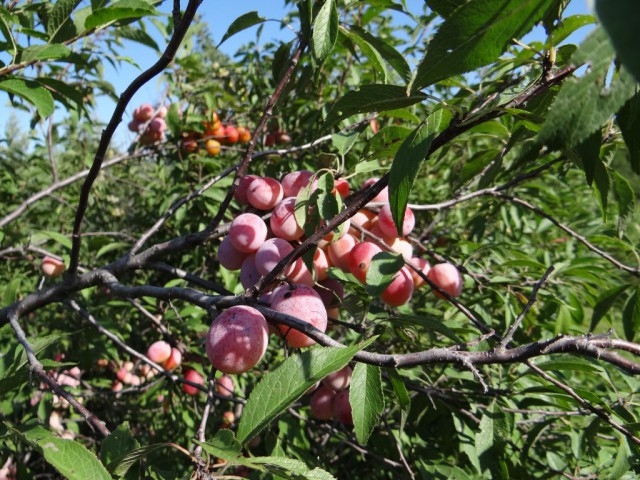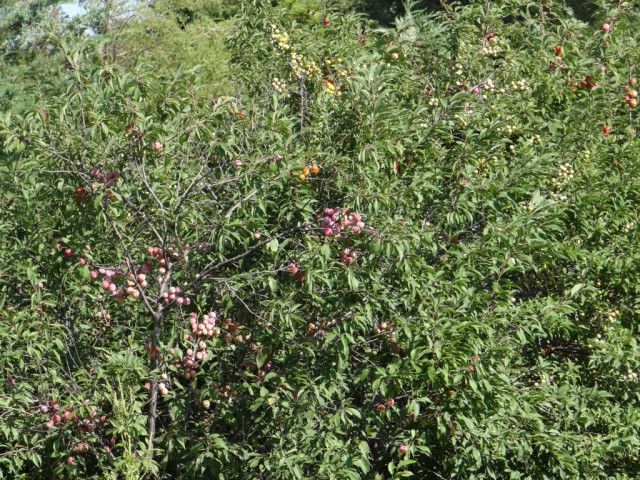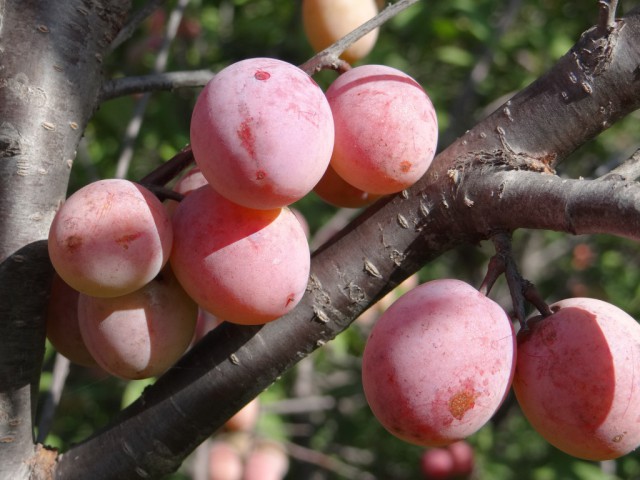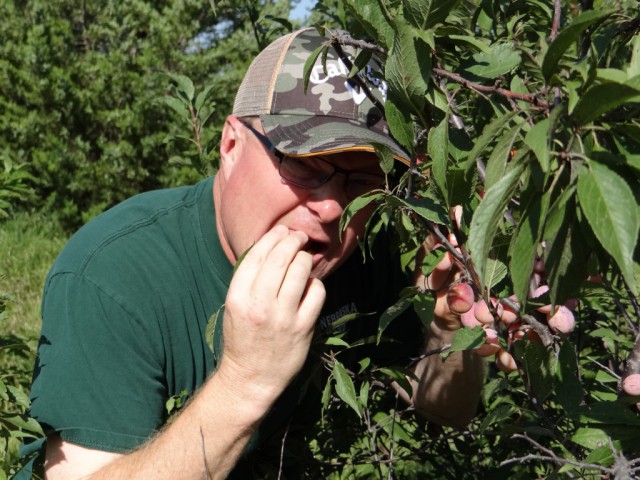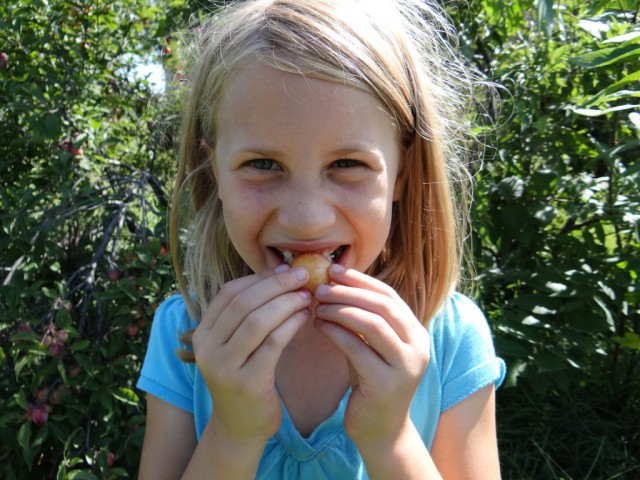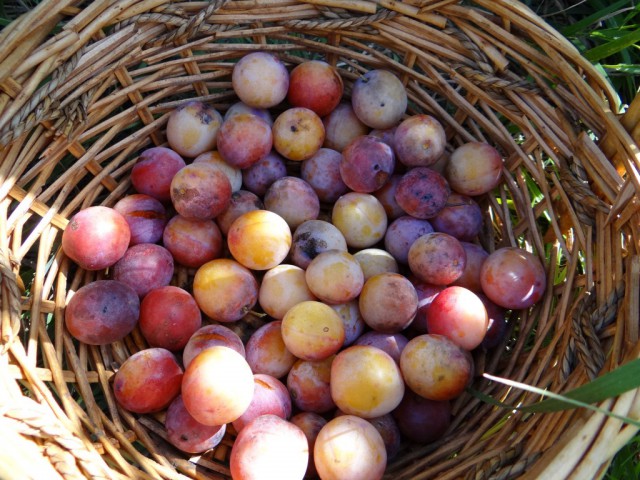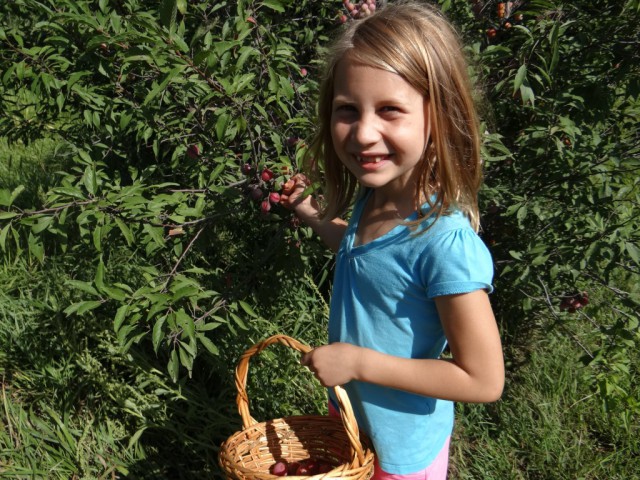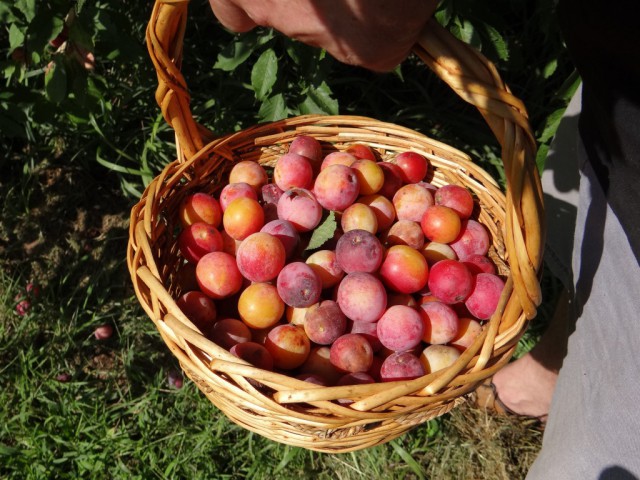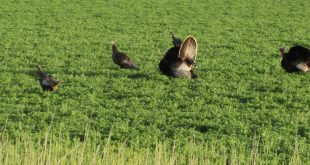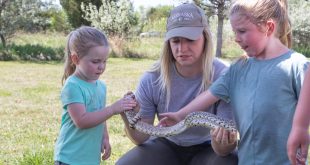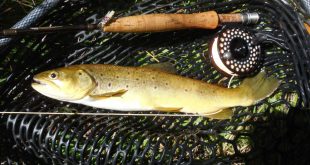We’re deep into our Nebraska summer and that means one thing regarding wild edibles — tasty, ripe plums!
Have you checked your rural wild plum thickets yet? You should. The deep hues of purples, red and yellows are now apparent on the wild plum trees growing on my buddy’s farm in eastern Nebraska long the Elkhorn River. Look closely.
You’ll know when the wild plums are ready for harvest because their flesh will be firm, but somewhat soft when pinched and they’ll almost drop from the thicket with the barest touch or slightest twist.
Plums begin taking on a dusty appearance as they ripen.
So, how do the plums growing wild differ from those you see in the grocery store? Wild plums are much smaller than their tame counterparts, and generally not as sweet. I love them just as they start to ripen. The taste of wild grown plum fruit ranges from tart to sweet but not bitter. They’ll make you pucker initially because the skin of that plum is particularly tart while the meat or flesh of the plum runs sweet. Some say the taste of the American plum is sort of like a cross between a cherry and a plum.
Plums are delicious cooked in jams, jellies, butters, sauces; baked in pies and coffee cakes; dried as prunes; or – best of all – eaten juicy fresh right off the tree (just remember to spit out the pit).
Once picked, wild plums will keep nicely in wicker baskets or flat boxes in a cool dry place for a few days. If you happen to have harvested plums that aren’t quite ripe, they will continue to mature off the branch.
When I was a kid, my grandparents and I collected wild plums. I learned at an early age that nature provides lots of good wild edible foods that are readily available during different times of the year. It’s more important than ever to take kids on fun, foraging adventures for wild fruit so they understand the origins of their food!
Before you get started in harvesting wild plums, there are a few foraging rules that I firmly believe in following and so should you! They are:
First – Always ask permission before gathering plums on private property – even if it’s just across the fence along the edge of a public road. Think how you’d feel or what you’d do if the tables were turned. Additionally, you’ll need to ask the landowner if any potentially harmful chemicals have not been sprayed on or near the plums you are about to pick!
Second – While picking plums, exercise a bit of caution. The twigs of these scrubby plum trees are covered with dull pointed thorns that can sometimes prick you.
Third – Don’t take more than you can use. Remember that other people may want to harvest some plums as well, and that wild fruit is an important food source for wildlife. If you’re sure you’re going to use it – take what you’ll use, but don’t take fruit that you might let spoil or not even use.
Fourth – If you aren’t fairly confident at identifying the plant or tree that you are wanting to find, be sure to get and bring along a quality field ID guide to trees.
Finally – If you have never tasted wild plums, try a couple before you collect a bunch. There’s no point in picking something you don’t like and that may go to waste.
Below is some info on the American Plum that you will find interesting as well as a unique recipe for wild plum ketchup that I came across. Enjoy!
American Plum
Facts: American plum is native shrub tree to Nebraska and well adapted to a wide variety of soil and climatic conditions. Throughout the U.S. there are about 30 varieties of native wild plums.
What: Ripe fruit with the earliest ripening fruit generally the sweetest.
How: Raw, dried, preserves, jams, jellies, butters, sauces, syrups, wine, brandy, ketchup, etc.
Where: Found usually along edges of woodlands, savannas, fields or in windbreaks or old shelter belts.
When: Late summer or early fall.
Nutritional Information: High in carbohydrates, Vitamin A, and minerals.
Plum Good Ketchup
Ingredients
2 cups cooked and strained plum puree
¼ cup apple cider vinegar
½ cup honey
1 teaspoon cinnamon
½ teaspoon ground cloves
a few scratches of nutmeg
½ teaspoon salt
pepper to taste
Directions
- Mix all the ingredients and bring this mixture to a very low simmer.
- Let the mixture cook until it thickens considerably.
- Taste while the batch is cooking and vary the amount of vinegar, sweetener and spices in this recipe to suit your tastes. Just keep tasting it until it hits the right notes for your palate.
- Let the mixture cook gently over low heat for 20 minutes, or until it reaches a thick, jam-like consistency.
- Keep refrigerated.
Recipe Source: Wendy Petty.
 Nebraskaland Magazine
Nebraskaland Magazine
